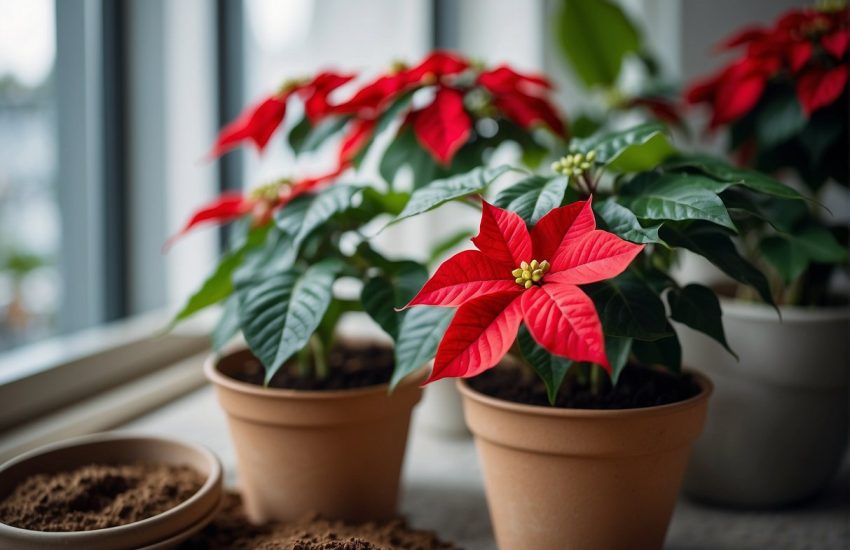Food for Flowering Plants: Essential Nutrients for Optimal Growth
Flowering plants are a beautiful addition to any garden or indoor space. However, to ensure that they thrive and produce vibrant blooms, it is essential to provide them with the proper nutrition. The right combination of nutrients can help stimulate plant growth, encourage flower production, and improve overall plant health.

Nutrition for flowering plants starts with the soil. Healthy soil provides a foundation for plants to absorb the necessary nutrients. It is crucial to ensure that the soil is well-draining and rich in organic matter. Adding compost or other organic materials to the soil can help improve its structure and provide essential nutrients for plants. Additionally, regular soil testing can help identify any nutrient deficiencies and guide the application of fertilizers or other supplements.
In addition to soil health, it is important to provide flowering plants with the right balance of nutrients. Different plants have different nutritional needs, but generally, they require nitrogen, phosphorus, and potassium. Nitrogen is essential for leaf growth, phosphorus promotes flower and root development, and potassium helps improve overall plant health and disease resistance. Providing the right combination of these nutrients can help ensure that flowering plants produce healthy, vibrant blooms.
Optimizing Soil and Nutrient Balance for Flowering Plants

Flowering plants require a balanced and nutrient-rich soil to bloom to their fullest potential. In this section, we will discuss some key factors to consider when optimizing soil and nutrient balance for flowering plants.
Soil pH and Nutrient Availability
Soil pH plays a critical role in determining nutrient availability for plants. Most flowering plants prefer a slightly acidic soil with a pH range of 6.0 to 7.0. If the soil is too alkaline or acidic, it can limit the availability of essential nutrients, such as phosphorus, potassium, and magnesium.
To determine the pH of your soil, you can use a soil test kit or send a sample to a soil testing laboratory. If the pH is too high, you can lower it by adding organic matter, such as compost or peat moss. If the pH is too low, you can raise it by adding lime or wood ash.
Essential Nutrients for Bloom Enhancement
Flowering plants require a range of essential nutrients to support their growth and bloom. The three primary macronutrients required for flowering plants are nitrogen, phosphorus, and potassium, often abbreviated as NPK. Nitrogen is essential for healthy foliage growth, while phosphorus is critical for flower development and root growth. Potassium is necessary for overall plant health and disease resistance.
In addition to macronutrients, flowering plants also require a range of micronutrients, such as magnesium, calcium, and iron, to support their growth and bloom.
Organic vs Synthetic Fertilizers
When it comes to fertilizers, there are two main types: organic and synthetic. Organic fertilizers are made from natural materials, such as compost, bone meal, and blood meal. They release nutrients slowly over time and improve soil structure and fertility. Synthetic fertilizers, on the other hand, are made from chemical compounds and release nutrients quickly. They can provide a quick boost of nutrients but can also harm soil health if overused.
Both organic and synthetic fertilizers have their pros and cons, and the choice between them will depend on your specific needs and preferences. In general, organic fertilizers are a better choice for long-term soil health and sustainability, while synthetic fertilizers can provide a quick fix for nutrient deficiencies.
By optimizing soil pH and nutrient balance and choosing the right fertilizers, you can ensure that your flowering plants have the nutrients they need to bloom to their fullest potential.
Practical Feeding Strategies for Gardeners
When it comes to feeding flowering plants, gardeners have a variety of practical options to choose from. By following a few simple strategies, gardeners can ensure their plants receive the nutrients they need to thrive.
Application Techniques and Timing
One of the most important factors in feeding flowering plants is proper application techniques and timing. Gardeners should apply fertilizers and other plant foods during the growing season, typically in the spring and summer. It’s also important to dilute fertilizers and other plant foods according to the manufacturer’s instructions to avoid over-application and burning.
DIY Natural Plant Foods and Amendments
For gardeners who prefer natural and environmentally friendly options, there are a variety of DIY plant foods and amendments available. Compost and manure are excellent sources of organic fertilizer, while coffee grounds, eggshells, and banana peels can be used as natural amendments to improve soil quality.
Avoiding Common Plant Feeding Mistakes
To avoid nutrient deficiencies and wilting, gardeners should be careful not to over-apply plant foods and fertilizers. It’s also important to monitor plants for signs of nutrient deficiencies and adjust feeding strategies accordingly.
By following these practical feeding strategies, gardeners can provide their flowering plants with the nutrients they need to grow and thrive. With a little care and attention, even the most affordable and natural options can yield impressive results.


